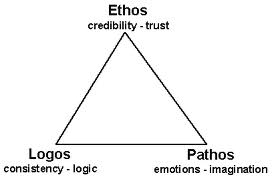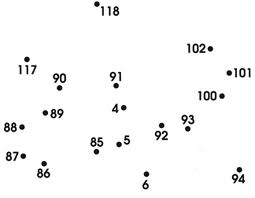Olivia Paris Harbison
Prof. Brinn Strange
English 102H
7 April 2014
How Food Deserts Evolved and Why they Exist in America
When I was a child my family always ate breakfast and dinner together.
Whether it was veggie dogs made by my mother or spaghetti made by my father, meals were considered family time and were always well planned. There was never a day when these meals did not happen, so never during my childhood did I consider if everyone’s childhood was the same as mine until I was fourteen or fifteen. I was about that age when I heard the term “food desert” for the first time while watching Food Network, one of my favorite television channels. I was shocked to learn that there were people who did not have food to eat at dinner or who had only Cheetos to eat at breakfast. Naturally, I became curious as to why food deserts existed and how those areas could gain access to nutritious food. Only as recently as 2008 has the term “food desert” been defined by the United States Department of Agriculture. The official definition of a “food desert” is an area vapid of fresh fruit, vegetables, and other whole foods (American Nutritional Association). A common theory about food deserts is the belief that food deserts occur only in metropolitan areas, but new research shows that food deserts occur in both metropolitan and rural areas. While the existence of food deserts is accepted as fact, the cause of food deserts is still debated.
The evolution of food deserts began with the introduction of the automobile in the early 1900’s (Larsen and Gilliland). Automobiles allowed middle-class people to move out of urban centers into the suburbs in the 1930’s to get out of the crowded, dirty cities. Businesses followed their clients into the suburbs in the 1970’s (Larsen and Gilliland). This is when the large grocery stores also moved into the suburbs to follow their wealthy patrons. After the middle-class moved out of the metropolitan areas, many of the “mom and pop” grocery stores in the urban centers were forced to close because of lack of patrons. Fast food restaurants and chains filled the gaps created when the “mom and pop” grocery stores that had provided the urban centers with their groceries, often since the founding of the city, were forced to close. By the 20th century, fast food chains had taken over America and the grocery superstores developed in the rural areas where land was plentiful. “Food Deserts” were first recognized by a 2001 study in the United Kingdom. Since then, more occurrences of food deserts have been known in first world countries including Canada, The United States, and The United Kingdom (Blanchard and Lyson 2). Food deserts are rapidly increasing phenomenon as, globally speaking, people consume more soft drinks and fast food as they grow more affluent, especially in developing countries. This link between economic success and nutritional failure has become so widespread that the term Nutritional Transition has been coined to refer to the cultural shift (Kingsolver 116).
In 2008 congress passed the Farm Bill directing the USDA to conduct a one year study of areas with limited access to affordable and nutritious food (USDA). After the year of surveying and collecting research, the data was analyzed in order to judge the severity of the situation and try to find a cause. The 2008 Farm Bill also attempted to define “ease of access” mostly by comparing what different researchers define as ease of access. Most researchers focus on walkability as a main method of transportation. But, walking is only a reasonable mode of transportation in urban areas where there is sometimes a large grocery store within one half mile, or public transport within a 500 meter walk. Studies of rural areas use a 10 mile radius to measure the ease of access to a grocery or healthful food store. However, in rural, less populated areas the 10 mile acceptable distance from a grocery store does not consider walking as a form of transportation (USDA). Because of the building of the super grocery stores on large high-ways with extra large parking lots, it makes it nearly impossible to access a grocery store without a car. Citizens of urban areas who do not have access to a private vehicles are mostly unable to access these larger superstores.
Larsen and Gillian ,researchers at the University of Ontario, take into consideration the access to public transit that can be found in most metropolitan areas. Their study in London, Canada attempts to determine if food deserts are caused by spatial inequalities or socioeconomic inequalities that cause food deserts. Unlike previous surveys, they measured public transit distance to supermarkets combined with a 500 meter walk. Their results revealed that the majority of all people in urban London had access to supermarkets via public transit. Another surprising fact, the neighborhoods with the least access to supermarkets via walking and public transit, were the suburban neighborhoods that the superstores and grocery stores cater to (Larsen and Gilligand). These areas that grocery stores and superstores cater to are usually middle or above middle-class where all households have access to private vehicles. This is strong evidence that access to nutritional and healthful food is not determined by location, but by socioeconomic status. In layman’s terms, access to healthful food depends on the financial ability to own and maintain a private vehicle while still being able to afford groceries.
Mari Gallagher explained her research on food deserts in Chicago in the recent TedX talk in the very city she studied. She also believed that food deserts were caused by socioeconomic reasons. The majority of all food deserts in Chicago had very low household incomes and large numbers of single parent families and senior citizens (TedX). For this reason, there were very few grocery stores in these neighborhoods and many fast food restaurants. The grocery stores followed the wealth into the suburbs in the 1970’s and left the inner city areas with limited access to food. Another reason Mari Gallagher gives for the existence of food deserts is quite shocking and seemingly confused. She points to food stamps, the “first line of defense against hunger” as another major cause of food deserts (TedX). The majority of all “small grocery stores” that accept food stamps are not in fact grocery stores. Most of them are liquor stores, convenience stores, or dollars stores, all of which sell food but not the nutritious and healthy kind (TedX). The food stamps system does not encourage lower income households to travel a distance to a grocery store, spending money on gasoline and taking time to drive discourage travel to a grocery store, when a convenience store within walking distance will accept food stamps as well.
The cause of food deserts and the concentration of grocery stores is slightly different in rural areas. Metropolitan areas have, comparatively, high population densities within a smaller area and citizens of urban areas, most often, have access to public transportation systems. Because rural communities do not have the population density to justify a public transportation system, good food access is determined by ownership of a private vehicle. For this reason, recent research into food access in the rural south classified those who lives within 10 miles of a large food retailer as having convenient access (Blanchard and Lyson 2). To be classified as a “food desert” a county had 50% or less of its population with convenient access to a large food retailer. The results of the study showed that 256 of the 873 counties were classified as food deserts(Blanchard and Lyson, 2). That comes to 30%, or almost one out of every three rural counties in the south, being classified as a food desert. The states with the highest numbers of food desert counties were Texas, Alabama, Arkansas, and Oklahoma. However the largest clusters of food desert counties occur in the Mississippi Delta, the Appalachian Regions of Kentucky and West Virginia, and the areas known as the “Black Belt” that stretches from southwest Mississippi to the eastern shore of North Carolina (Blanchard and Lyson 3). This is significant to explain the development of food deserts because these areas are all characterized by widespread poverty found there.
The location of food deserts in only wealthier nieghborhoods could be an explanation for why only one out of the 256 food desert counties contained a superstore center, like Walmart or Sam’s Club(Blanchard and Lyson 3). Superstore centers cater to the wealthy, suburban neighborhoods with the population to sustain their profit, making such areas as the Mississippi Delta or the “Black Belt” undesirable business locations. This also contributes to the fact that only 10 of the 256 counties had a supermarket, and the 10 that had supermarkets were located next to larger metropolitan areas (Blanchard and Lyson 4). The “following of wealth” could also explain the fact that all counties (12 out of 256) with fruit and vegetable markets were located next to large metropolitan areas (Blanchard and Lyson 4).
If access to fresh, wholesome food is so limited, then where do the rural inhabitants of the south get their groceries? Mostly from the small grocery or convenience stores that are located in every one of the 256 counties. Unlike in larger counties that have large grocery stores or supermarkets, these small and usually non-nutritious junk food vendors become the main source of nourishment along with restaurants and fast food chains. The density of these types of establishment shed light on where and what kind of food people in food deserts and non food deserts have access to. Both food deserts and non food deserts have the approximate same numbers of gas stations, convenience stores, and full service restaurants (Blanchard and Lyson 4). The real difference between the two areas is the number of fast food restaurants on top of the lack of grocery stores. Food deserts have substantially more fast food restaurants than non food deserts (Blanchard and Lyson 4). These types of food retailers fill the gaps created by grocery stores and superstores and cause the prevalence of low quality and low nutrient food that makes food deserts a healthy concern for local communities and the country as a whole.
Many studies have shown that regularly eating cheaply produced fast foods and snack foods adds extra pounds and increases the risks of diabetes, cardiovascular harm, joint problems, and many cancers. The incidences of obesity has more than doubled since the 1990’s, now more than two thirds of adults have been diagnosed but children are the fastest growing group of victims (Kingsolver 130).
Mari Gallagher, who now owns and runs her own researching company in Chicago, is one of the leading experts on food deserts. Her 2006 research on food deserts focused on the neighborhoods of inner city Chicago and analyzed many different possible causes and effects of urban food deserts. One of her findings included a positive relationship between Food Balance Score and obesity (Mari Gallagher). The Food Balance Score is a measuring tool made by the research group to represent the ratio between the distance to the nearest grocery store, to the distance to the nearest fast food outlet (Mari Gallagher 31). This means that when the concentration of fast food restaurants is greater than the concentration of grocery stores, the rates of obesity increase. This is even after controlling for income and racial majority (Mari Gallagher 31). The results of the research also showed that the distance to the local grocery store effected BMIs (the ratio of bady fat to non-fat) of an area more than the average distance to a fast food restaurant (Mari Gallagher 31). This evidence directly connects food deserts to America’s obesity crisis.
Mari Gallagher and her research group went a step further to calculate the years of potential life list from premature death (Mari Gallagher 25). Because African Americans make up the majority of food desert populations, they are also the minority with the highest numbers of years lost from cancer, cardiovascular disease and diabetes. While it may not be caused by living in a food desert, strong evidence suggests so. Communities with the best food balance score had health outcomes above the average of all other communities combined (Mari Gallagher 26). The difference between an in balance and an out of balance community in a 50% increase in premature diet-related mortality (Mari Gallagher 23). Another important result of Mari Gallagher’s research was the composition of races within the food deserts. The most important fact that she discovered was the higher concentration of minorities, like African Americans and Hispanics, in food deserts (Mari Gallagher 21). While minorities cluster dramatically in food deserts, multi-racial neighborhoods had the shortest distances to grocery stores and the most balanced nutritional intakes (Mari Gallagher 22). Because of this, minorities, mainly African Americans, have the highest occurrences of health problems associated with living in a food desert (Mari Gallagher 23).
All of these studies paint a very accurate picture of what a food desert typically looks like. Every town has a neighborhood that fits the description of a food desert, comprised mostly of racial minorities, lower socioeconomic status, and usually crowded with fast food resturants and drive throughs. Food deserts are much more numerous in the south and they cluster dramatically. Large cities like New Orleans, Mobile, and even Hattiesburg are hosts to food desert counties and neighborhoods, but a positive sign of change is the existence of new food pantries and organic grocery stands in many neighborhoods across the south. One example is the non-profit food pantry in my home town of Daphne, Alabama. The Prodisee Pantry has been providing needy families with nutritious food since 2003, and has expanded greatly since Hurricane Katrina in 2005. Volunteer Rose Morgan has been volunteering since Katrina and can testify to the growing number of families coming to the pantry for groceries. From its humble beginnings of servicing 50 families, Prodisee Pantry now has 200 families come to the pantry on an average day (Morgan). The majority of the families that come to the pantry are single parent households of senior citizens raising grandchildren.
It has been questioned whether food deserts are caused by the spacial inequalities of grocery providers or because of inequalities in household income and socioeconomic status. As shown by the research in London, Canada, and Chicago, Illinois, both can impact a person’s ability to access nutritious food. Both inequalities in combination impact food access greatly and cause food deserts. Now, grocery stores are built in suburbs on large highways, and require access to a private vehicle. Those who are unable to afford both a private vehicle, usually, only have access to food within a walking distance or with public transit. This means that these communities have easy access to fast food and cheap gas station snacks. Food Desert communities are one of the major factors contributing to America’s obesity and health crisis. Plagued with health problems such a cancer, diabetes, and complications diabetes; these communities are a major health concern for the country because of their contributions to the obesity crises. This makes the persistence of food deserts a concern for each communities and the country as a whole.
Works Citied
Blanchard, Troy, and Thomas Lyson. Food Availability and Food
Deserts in the Nonmetropolitan South, Southern Rural
Development Center. Apr. 2006. Web. 25 Feb. 2014
The Southern Rural Development Center did very detailed research on the concentration of food deserts in the south and why rural food deserts are differnt from urban food deserts. Thsi source will form the bulk of my information on rural food deserts and will re-enforce the fact that food deserts do exist in rural areas. This source will also help to make the transition to rural food deserts to southern food deserts. From here I will be able to add for pathos in my essay by relating food deserts to my childhood growing up in the south.
Kingsolver, Barbara. Animal, Vegetable, Miracle. New York:
HarperCollins Publishers, 2007. Print.
Animal, Vegtable, Miracle has many good sections in the seventh chapter about “food deserts” and generally malnurished areas of the country. Many of the comments I will use the create a smooth transition between facts about a food desert and why everyone should be conserned. Kingsolver states many basic facts about the situation of the country, obesity, and the obesity crisis.
Larsen, Kristian, and Jason Gilliland. Mapping the Evolution
of ‘Food Deserts’ in a Canadian City: Supermarket
Accessibility in London, Ontario, 1961-2005. International
Journal of Health Geographics. Internal Journal of Health
Geographics. 4 Mar. 2008. Web. 25 Feb. 2014
The research of Larsen and Gilliland shows the slow progression of one town in Canada from normal town to food desert. I will use this source to explain in full detail what causes an area to have limited access to nutritious food and why metropolitan areas are more at risk of this.
Mari Gallagher Research and Consulting Group. From Food Desert
to Food Oasis, 2010. Web. 25 Feb. 2014.
Mari Gallagher is the principal of the Mari Gallagher Research and Consulting Group and is also the founding president of the National Center for Public Research. The Mari Gallagher Research and Consulting Group has done ample research on the Food Deserts in Chicago. The deserts have been closely mapped along with the food sources and the different races, ages, and incomes of the people living in the Chicago Food Deserts. This research was translated into data that can now be used to better understand the development of food deserts and how to improve the nutrition available in these areas.
I will use Mari Gallagher’s research to challenge traditional ideas about food deserts and the people who are citizens of food deserts. I will also use her research to explain the development of food deserts and how to improve the diets in these areas.
Morgan, Rose. Personal interview. 2 Apr. 2014.
Rose Morgan is a volunteer who has been working with Prodisee Pantry in Baldwin County, Alabama since Hurican Katrin in 2005. She gladly shared with me the growth of the pantry and the different types of people who come to the pantry for meals. I will use the information that she shared with me to establish more pathos in the conclusion of my essay and try to get the audience to think of a similar area within their own communities. This interview will also serve to show how much more agrivated the problem has become in the last few years.
“TEDxWIndy City–Mari Gallagher–Food Deserts.” YouTube. n.p.,
n.d. Web. 25 Feb. 2014.
Mari Gallagher explains in detail the findings of her research in the food deserts of Chicago. She talks about the many elements that affect food deserts such as race, income, age, gender, malnutrition, obesity, and federal aid. This I will use to better explain her research and as a source of graphics. I will also use this video to expound upon the ways living in a food desert causes malnutrition and the diseases caused by malnutrition.
“USDA Defines Food Deserts”. Nutrition Digest 36. 3 (2011):
Web. 25 Feb. 2014
Food deserts are defined by the USDA as a “part of the country vapid of fresh fruits, vegetables, and other whole foods, usually found in impoverished areas. This is due to a lack of sources of whole foods and vegetables, like grocery stores and farmers markets. These areas are cause for concern because food deserts are often full of “quicky marts” and fast food restaurants that provide processed, sugar, and fat filled fast food. The low numbers of whole food grocers and the high numbers of fast food make food deserts the main contributors to the obesity crisis.
I will use the USDA defined as a starting point to explain what a food desert is and where they are. I will also use this information to set up the stereotypes about food deserts in order to later correct those stereotypes.





